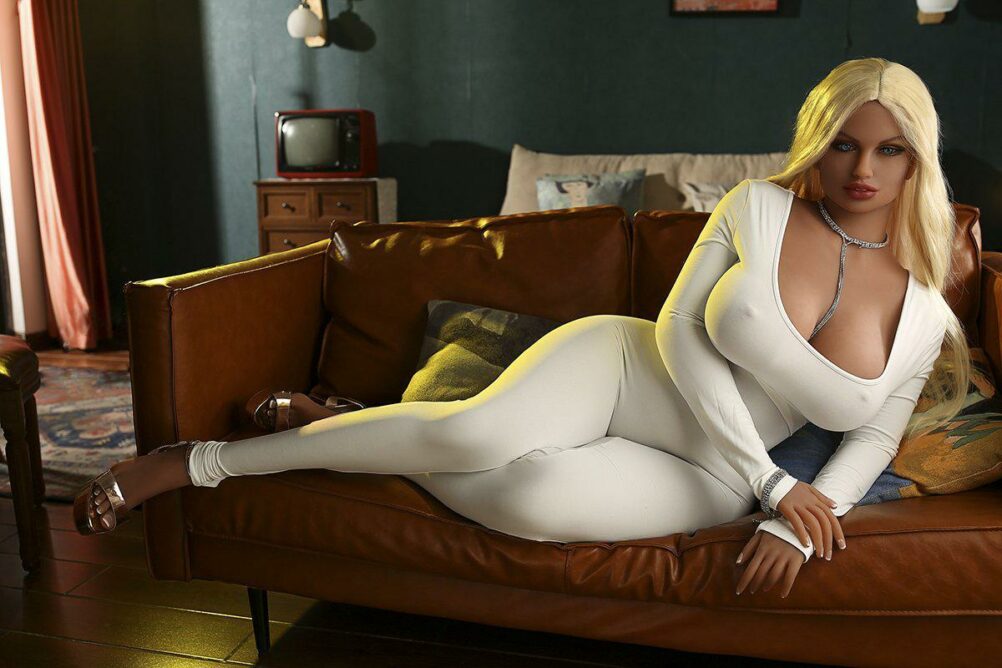Uncategorized
Sex Dolls in Marketing: How Brands Spark Bold Activations
TABLE OF CONTENTS
Have you noticed some very unexpected faces in ad campaigns? Businesses are taking risks by using sex dolls in marketing. Using sex dolls in marketing is bold and innovative. It is not just about shock value—it’s about sparking conversation and connecting with audiences in unexpected ways. Let’s explore the many angles of this trend and see what it means for the future of brand activations.
What Are Sex Dolls in Marketing Campaigns?
Sex dolls in marketing campaigns are not your everyday promotional tools. They are often used as eye-catching props or interactive elements in ad stunts. You might see them in photoshoots, social media posts, or live events to invite conversation.
These dolls either look realistic or even animated. They can be dressed up, posed, or integrated into creative backdrops. The idea is to push boundaries and grab your attention. When a company uses a sex doll in its campaign, it is usually to signal that they are not afraid to break the mold.
Some brands use these dolls to challenge social norms and encourage debate. You might think it’s all for the buzz, but there’s often a deeper strategy behind the choice. It shows that the brand is innovative, daring, and ready to engage with broader audiences.
How Businesses Use Sex Dolls in Marketing Campaigns
Businesses use sex dolls in many different ways in their campaigns. For some, the doll sparks conversation and drives social media chatter. When you see an unexpected prop like this, you can bet people will talk about it online and offline.
One popular method is to incorporate these dolls into photo shoots and videos. They can be used in various themes like beauty, desire, or even satire. In these campaigns, the doll often stands as a symbol of something bigger—a critique of society’s standards or a call for more open-minded discussions.
Another way businesses use sex dolls is during live events. You might attend a brand activation where a sex doll is part of the show. These events invite you to interact, take pictures, and even share your thoughts. This direct engagement can boost a campaign’s reach and create a memorable experience that sets the brand apart from its competitors.
In some cases, the doll serves as a metaphor for a product’s features or a company’s philosophy. It challenges you to look beyond the surface and explore hidden meanings. With this approach, the campaign becomes not just about selling a product but also about sparking a conversation on broader cultural themes.
Creative Campaigns Featuring Sex Dolls
When it comes to creativity, these campaigns do not hold back. You might see a sex doll in a setting that you’d never expect—a café, a museum, or even a tech expo. The unexpected nature of these placements makes you take a second look.
Some brands have taken the creative route by designing custom dolls that reflect their brand personality. For instance, a fashion label might create a doll that wears its latest collection. The doll then becomes a living billboard that shows off the brand’s style in a fun and quirky way.
Other campaigns use humor and irony to their advantage. Imagine a sex doll posed alongside a luxury car or a high-end gadget. The combination is so unusual that it sparks laughter and interest. You might not agree with every choice, but the campaign makes you look twice and maybe even smile.
These creative efforts break through the clutter of typical advertisements. They push you to rethink what marketing can be. Instead of following the same old script, brands that use sex dolls offer a creative and controversial approach to marketing.
Brand Activations and Sex Dolls
Brand activations are events designed to get you involved. When a sex doll enters the scene, the activation becomes even more intriguing. Businesses use these dolls to create experiences you will remember long after the event is over.
At live events, a sex doll might be a quirky host or a playful prop. For example, a pop-up store might feature a doll that jokes around with people. You could find yourself taking selfies or sharing a laugh over the unexpected sight. These interactions help the brand create a personal connection with you.
Sometimes, the doll is part of an installation that invites you to enter a themed environment. In these settings, you may experience art, performance, and marketing. It’s a chance for you to experience the brand’s vision firsthand. By inviting you into a story, the brand creates a stronger bond and a more lasting impression.
Brand activations using sex dolls are all about creating buzz. They leverage the shock factor to draw you in and win your trust through engaging experiences. The result is a memorable campaign that leaves you with something to discuss—and that’s what brands aim for.
Benefits of Using Sex Dolls in Marketing
One of the benefits is boosting attention. When you see a campaign featuring a sex doll, you’re likely to stop and look. Brands that want to stand out in a crowded market can benefit from immediate attention. This kind of focus can make a big difference.
Another benefit is the conversation factor. Sex dolls in campaigns spark debate. Whether you laugh, cringe, or discuss the topic with friends, you engage with the brand in a way that traditional ads might not achieve. This discussion can lead to a broader reach and more organic sharing on social media.
Using a sex doll can also signal that the brand is modern and fearless. In a world where many companies play it safe, you appreciate a brand that dares to be different. This bold move can build trust with consumers who value innovation and authenticity.
Finally, these campaigns often make you curious. You may want to know more about the brand behind the stunt. This curiosity can lead you to explore the company’s website or social media channels, turning an initial shock into a lasting interest. When done right, this strategy boosts overall brand engagement and even sales.
Risks and Ethical Considerations
Even with the benefits, there are risks involved. Using sex dolls in marketing can sometimes backfire if the audience feels the message is too crass or off-putting. You might see the backlash from those who think the tactic crosses a line. It is something brands must weigh carefully.
Ethical considerations also come into play. Some people believe that using sex dolls in campaigns trivializes real issues around intimacy and human relationships. When you see such a campaign, it may spark a debate about what is acceptable in advertising. Brands need to be clear about their message to avoid misunderstandings.
Another risk is that the shock value might overshadow the product itself. If you focus too much on the doll, you might miss the brand’s core message. The challenge for marketers is to balance creativity with clear communication. You should come away from the campaign understanding what the brand stands for and what it offers.
Lastly, cultural differences matter. In some regions, using sex dolls in advertising might be seen as innovative, while in others, it could offend deeply held values. Companies must research their audience carefully before rolling out such a bold tactic. This way, they can avoid alienating you or potential customers.
Real-World Examples of Sex Doll Marketing
Many people have seen how brands use sex dolls in their marketing. A well-known example is from Bondara, a UK adult retailer. In 2015, they launched the “General Erection” campaign. They created inflatable sex dolls that resembled political figures such as David Cameron, Ed Miliband, Nick Clegg, Nigel Farage, and Natalie Bennett.
This bold move got much media attention and sparked lively discussions online. It showed that an unconventional approach can create significant buzz.
Another striking example is the French project Mdvanii, created by artist BillyBoy. Mdvanii started as an artistic idea but was featured in campaigns that combined art and fashion. The doll wore outfits designed by famous designers like Thierry Mugler and Guy Laroche. This use of Mdvanii challenged traditional beauty standards and added an interesting twist to marketing.
In 2017, Bondara built on its successes by launching life-size, realistic sex dolls called Bondara Babes. These dolls were a primary part of pop-up events and social media activities. They offered fun, interactive experiences that connected with audiences. This approach helped Bondara become known as an innovative brand that mixes shock value with engagement to stand out in a competitive market.
Each example shows how specific brands have harnessed the power of sex dolls to spark conversation, break taboos, and ultimately enhance brand identity—all while daring to be different.
Future Trends and Innovations
Looking ahead, you can expect the trend of using sex dolls in marketing to evolve further. As technology advances, these dolls might become even more interactive. Imagine a campaign where a sex doll responds to your voice or mimics human expressions. This blend of robotics and art could take brand activations to a new level.
Innovative companies are now experimenting with augmented reality (AR) to bring these campaigns to life. You might soon see an AR app where a digital version of a sex doll interacts with you at a live event. The combination of real and virtual worlds creates a more immersive experience and deepens your engagement with the brand.
Another trend is the rise of personalization. Brands may offer customizable dolls that reflect a customer’s style or preferences. Involving you in the creative process allows companies to build a stronger connection with you. This interactive twist might lead to co-created campaigns where you have a say in the doll’s design.
Finally, the conversation around ethics and culture will likely shape future innovations. Companies will be more thoughtful about their messages and their impact on different audiences. The future of sex doll marketing will depend on balancing bold creativity with respect for social values. As you watch these trends develop, it’s clear that marketers are not afraid to push boundaries and explore new ways to capture your attention.
Conclusion
Businesses are using sex dolls in marketing campaigns to make a strong impression and spark conversation. Whether you find the tactic daring or too out there, it shows a clear move toward creativity and risk-taking in advertising. This trend challenges traditional ideas of what is acceptable in marketing, and you can see its impact across various industries.
In the end, the use of sex dolls in brand activations is all about standing out. Companies that embrace this bold tactic are betting on curiosity and conversation to boost their brand.
It may be a wild ride, but it shows no signs of slowing down. As you keep up with the latest trends, you’ll see that marketing relies on bold creativity as much as it does on sharing a message.

